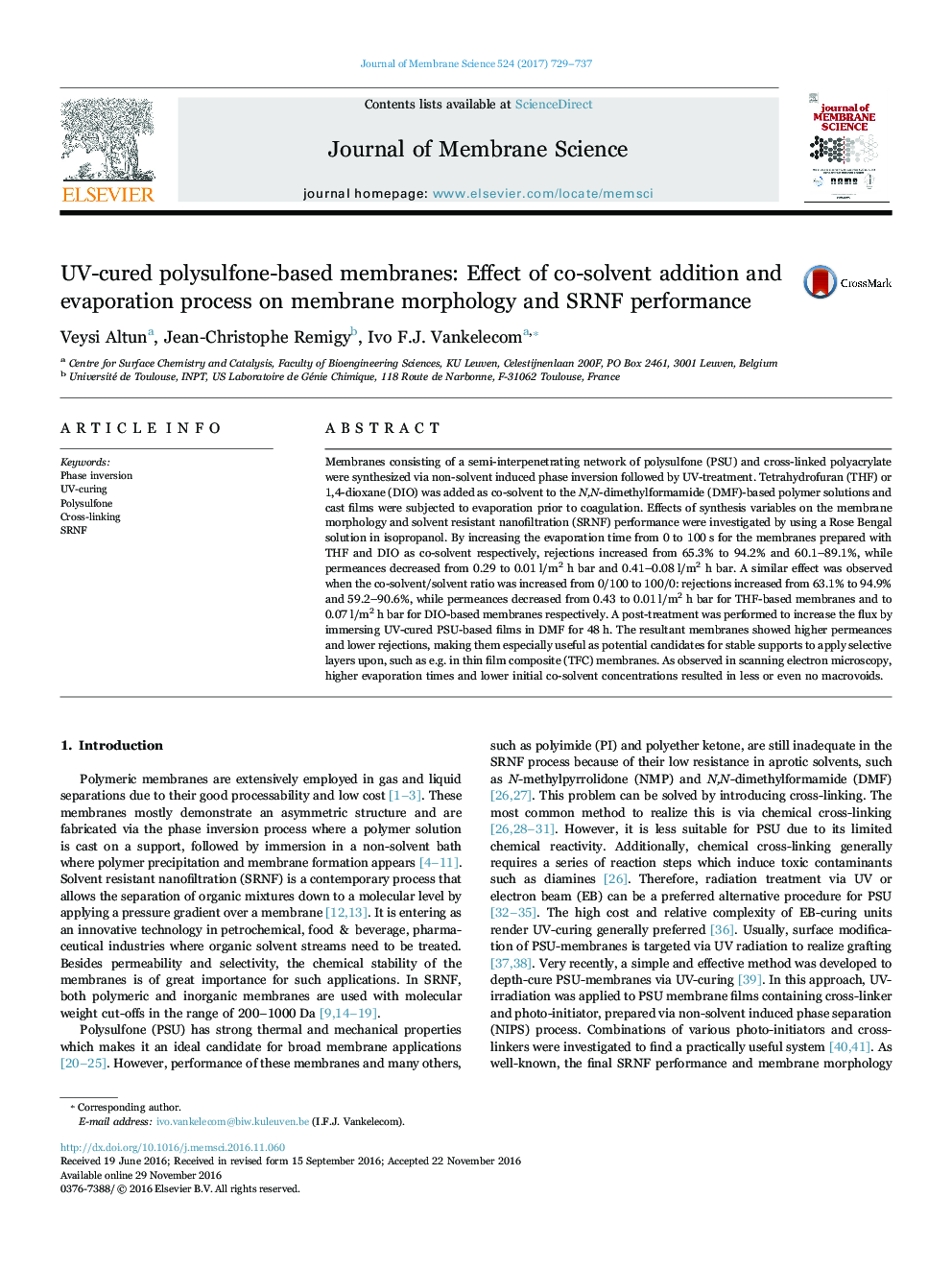| Article ID | Journal | Published Year | Pages | File Type |
|---|---|---|---|---|
| 4989260 | Journal of Membrane Science | 2017 | 9 Pages |
Abstract
Membranes consisting of a semi-interpenetrating network of polysulfone (PSU) and cross-linked polyacrylate were synthesized via non-solvent induced phase inversion followed by UV-treatment. Tetrahydrofuran (THF) or 1,4-dioxane (DIO) was added as co-solvent to the N,N-dimethylformamide (DMF)-based polymer solutions and cast films were subjected to evaporation prior to coagulation. Effects of synthesis variables on the membrane morphology and solvent resistant nanofiltration (SRNF) performance were investigated by using a Rose Bengal solution in isopropanol. By increasing the evaporation time from 0 to 100Â s for the membranes prepared with THF and DIO as co-solvent respectively, rejections increased from 65.3% to 94.2% and 60.1-89.1%, while permeances decreased from 0.29 to 0.01Â l/m2 h bar and 0.41-0.08Â l/m2 h bar. A similar effect was observed when the co-solvent/solvent ratio was increased from 0/100 to 100/0: rejections increased from 63.1% to 94.9% and 59.2-90.6%, while permeances decreased from 0.43 to 0.01Â l/m2 h bar for THF-based membranes and to 0.07Â l/m2 h bar for DIO-based membranes respectively. A post-treatment was performed to increase the flux by immersing UV-cured PSU-based films in DMF for 48Â h. The resultant membranes showed higher permeances and lower rejections, making them especially useful as potential candidates for stable supports to apply selective layers upon, such as e.g. in thin film composite (TFC) membranes. As observed in scanning electron microscopy, higher evaporation times and lower initial co-solvent concentrations resulted in less or even no macrovoids.
Related Topics
Physical Sciences and Engineering
Chemical Engineering
Filtration and Separation
Authors
Veysi Altun, Jean-Christophe Remigy, Ivo F.J. Vankelecom,
